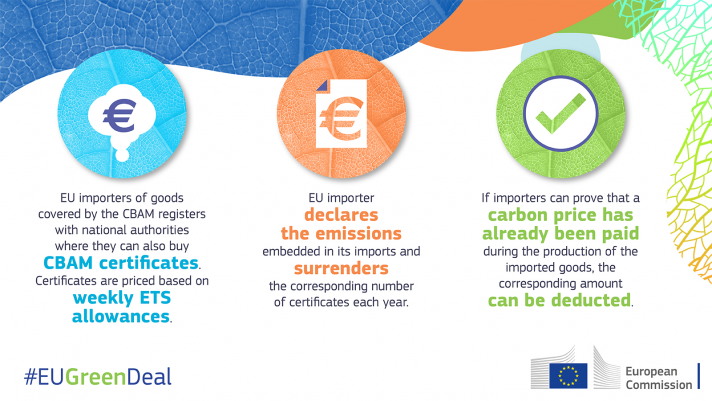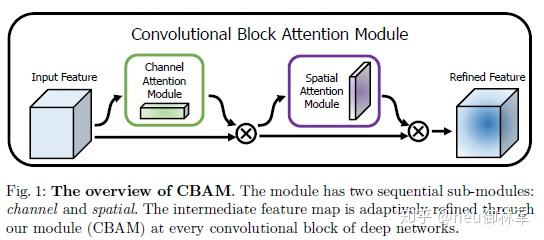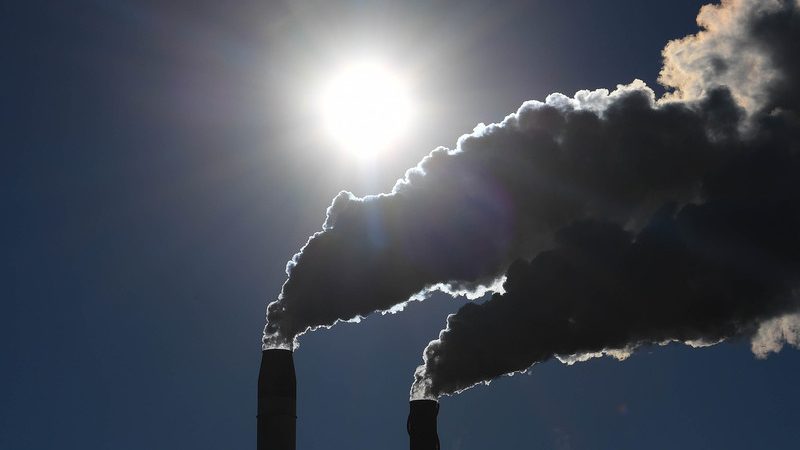Cbam Regulation : What it is
CBAM Regulation: What It Is and How It Affects EU Energy Intensive Industries Introduction The Carbon Border Adjustment Mechanism (CBAM) Regulation has been a topic of discussion and debate within the European Union (EU) and its energy-intensive industries. This regulation aims to address the issue of carbon leakage, which occurs when EU industries relocate their production in response to stricter climate regulations, resulting in increased emissions in countries with less stringent climate policies. In this article, we will delve into the details of the CBAM Regulation, its implications for energy-intensive industries, and its potential consequences for European aluminium production. 1. Understanding the CBAM Regulation The CBAM Regulation is a proposed mechanism by the EU to place a carbon price on certain imported goods. It aims to create a level playing field by ensuring that imports are subject to the same carbon pricing as products manufactured within the EU. The primary objective of the CBAM Regulation is to prevent carbon leakage and protect European industries from the competitive disadvantage imposed by a lack of comparable carbon pricing in other countries. 2. Implications for Energy Intensive Industries One of the main sectors impacted by the CBAM Regulation is energy-intensive industries. These industries, including steel, cement, and chemicals, are central to EU's economy but are also significant carbon emitters. The CBAM Regulation would require these industries to account for the carbon content of their imports, acting as an incentive to reduce emissions and invest in cleaner technologies. 2.1 Steel Industry's Perspective The steel industry has expressed concerns regarding the CBAM Regulation. They argue that the regulation could lead to an increase in production costs, which may render European steel uncompetitive in the global market. This, in turn, could result in a decline in market share and potential job losses within the industry. 2.2 Cement Industry's Challenges Similarly, the cement industry faces challenges with the implementation of the CBAM Regulation. Cement production is a significant emitter of CO2, and the industry is concerned about the potential cost implications. Additionally, there is uncertainty regarding the calculations of embedded carbon content in cement imports, which may require substantial administrative efforts. 3. The Threat to European Aluminium Production The European aluminium industry has raised significant concerns about the potential impact of the CBAM Regulation. A report has warned of a quasi-end of European aluminium production if the CBAM Regulation is implemented without proper safeguards and support for the industry. 3.1 Impact on Competitiveness The aluminium industry argues that the CBAM Regulation could further increase the production costs in a sector that is already facing intense global competition. As aluminium is an energy-intensive industry, the regulation's carbon pricing mechanism may heavily impact European manufacturers, while their international counterparts may remain unaffected. 3.2 Risk of Carbon Leakage Moreover, there is a risk of carbon leakage in the aluminium industry. Without appropriate measures to prevent the relocation of aluminium production outside the EU, emissions may increase globally as European manufacturers face higher costs and move their manufacturing operations to countries with less stringent climate policies. 4. Addressing Concerns and Ensuring a Just Transition While the CBAM Regulation presents challenges for energy-intensive industries such as steel, cement, and aluminium, it is crucial to ensure a just transition towards a low-carbon economy. The EU must consider the concerns of these industries and implement measures to alleviate potential negative impacts. 4.1 Supporting Innovation and Technological Advancements To address the concerns raised by energy-intensive industries, the EU should prioritize support for innovation and the development of low-carbon technologies. This could include financial incentives, research funding, and collaboration with industry stakeholders to accelerate the deployment of cleaner production methods. 4.2 Investing in Infrastructure Investing in infrastructure that enables the decarbonization of energy-intensive industries is another crucial aspect of a just transition. This includes expanding renewable energy sources, such as wind and solar, to meet the energy demands of these industries. Additionally, the development of carbon capture and storage technologies can help reduce emissions in sectors that are inherently difficult to decarbonize. 4.3 Establishing a Fair Carbon Pricing System To ensure a level playing field, the EU should establish a fair carbon pricing system that also takes into account the efforts made by energy-intensive industries to reduce their emissions. This could include providing carbon credits or other incentives to encourage early adoption of cleaner technologies and processes. FAQs: Q1: How will the CBAM Regulation impact the competitiveness of EU industries? A1: The CBAM Regulation may increase the production costs for energy-intensive industries, potentially affecting their competitiveness in the global market. Q2: What measures can be taken to mitigate the negative impacts of the CBAM Regulation? A2: To mitigate the negative impacts, the EU can support innovation, invest in infrastructure, and establish a fair carbon pricing system. Q3: What are the potential consequences of the CBAM Regulation for European aluminium production? A3: European aluminium production may face a decline or even quasi-end if the CBAM Regulation is implemented without proper safeguards and support for the industry. Conclusion The CBAM Regulation is a significant policy proposal by the EU to address the issue of carbon leakage and level the playing field for European industries. While it presents challenges for energy-intensive sectors such as steel, cement, and aluminium, it also offers an opportunity for these industries to transition towards a low-carbon future. It is essential for the EU to consider the concerns of these industries and implement measures that ensure a just and sustainable transition while meeting climate goals.  Image Source : taxation-customs.ec.europa.eu
Image Source : taxation-customs.ec.europa.eu  Image Source : europeanenergyforum.eu
Image Source : europeanenergyforum.eu  Image Source : kpmg.com
Image Source : kpmg.com  Image Source : geciclaw.com
Image Source : geciclaw.com  Image Source : zhuanlan.zhihu.com
Image Source : zhuanlan.zhihu.com  Image Source : eurometal.net
Image Source : eurometal.net  Image Source : europeanenergyforum.eu
Image Source : europeanenergyforum.eu  Image Source : aluminiumtoday.com
Image Source : aluminiumtoday.com
Carbon Border Adjustment Mechanism
 Image Source : taxation-customs.ec.europa.eu
Image Source : taxation-customs.ec.europa.eu CBAM Regulation: A Discussion With EU Energy Intensive Industries
 Image Source : europeanenergyforum.eu
Image Source : europeanenergyforum.eu Summary Of The CBAM Regulation - KPMG Global
 Image Source : kpmg.com
Image Source : kpmg.com Warming Up CBAM Regulation To Cool The Earth | Gecić Law
 Image Source : geciclaw.com
Image Source : geciclaw.com CBAM:卷积注意力机制模块 - 知乎
 Image Source : zhuanlan.zhihu.com
Image Source : zhuanlan.zhihu.com CBAM Regulation Officially Signed - EUROMETAL
 Image Source : eurometal.net
Image Source : eurometal.net CBAM Regulation: A Discussion With EU Energy Intensive Industries
 Image Source : europeanenergyforum.eu
Image Source : europeanenergyforum.eu Report Warns Of Quasi-end Of European Aluminium Production If EU CBAM…
 Image Source : aluminiumtoday.com
Image Source : aluminiumtoday.com Cbam regulation: a discussion with eu energy intensive industries. Warming up cbam regulation to cool the earth. Summary of the cbam regulation. Cbam regulation: a discussion with eu energy intensive industries. Cbam regulation officially signed